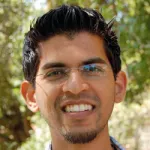Interdisciplinary Initiatives Program Round 11 - 2022
Project Investigators:
Bo Wang, Bioengineering
Anshul Kundaje, Genetics and Computer Science
Abstract:
Some animals can regenerate from minute tissue fragments after injury. During regeneration, thousands of genes need to be tuned up or down in both space and time to coordinate responses in various cell types for rebuilding new tissues. Our goal is to understand how such complex molecular choreography is encoded in the genome. We propose to study a new lab model, the flatworm Macrostomum lignano, which is a genetically tractable regenerative animal. When a Macrostomum is cut in half, its head fragment can fully regenerate posterior structures, but the tail only can heal the wound without regenerating missing tissues. We will use single-cell multiomic sequencing coupled with deep learning models to identify regulatory sequences that dictate the diverging courses and outcomes of regeneration in M. lignano head and tail fragments. We will predict the genotype-phenotype relationships by mutating the regulatory sequences and interpreting their functions in silico, and then experimentally validate these predictions in vivo using genome editing. Understanding the regulatory genome that controls molecular responses after wounding can inform new strategies to redirect destructive wound responses, such as those often seen in humans, toward reparative responses. Therefore, our studies bear the promise for ultimately enhancing regenerative recovery of patients after injury and disease.



